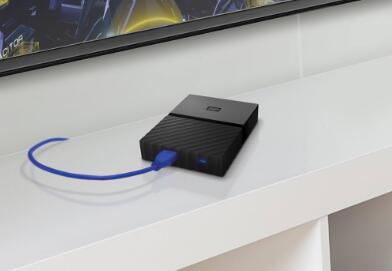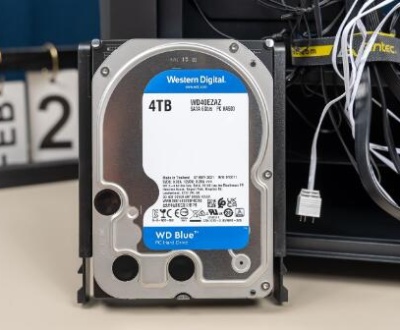Data loss can happen to anyone, and it’s often an unexpected and distressing event. Western Digital Passport external hard drives are popular for their portability and reliability, but they are not immune to issues that can lead to data loss. Whether due to accidental deletion, drive corruption, or physical damage, recovering data from a WD Passport drive is crucial for many users.
1. Western Digital Passport
1.1 Overview of WD Passport
The Western Digital Passport is a line of portable external hard drives designed for users who need reliable storage solutions. These drives are available in various capacities, making them suitable for everything from casual file storage to professional data backup. They are known for their lightweight design and ease of use, often featuring USB 3.0 connectivity for fast data transfer.

1.2 Common Use Cases
Backup Solutions: Many users utilize WD Passport drives for backing up important files and system images.
File Transfer: The portability of these drives makes them ideal for transferring large files between devices.
Media Storage: Photographers and videographers often use WD Passport drives to store and transport large media files.
2. Common Causes of Data Loss on WD Passport
Understanding the potential causes of data loss can help users take preventative measures. Here are some common reasons:
2.1 Accidental Deletion
Files can be deleted unintentionally, often during file management tasks. This can happen through misclicks or mistaken selections.
2.2 Drive Formatting
Accidentally formatting the drive can erase all data. This may occur when trying to use the drive with a new operating system or after encountering errors.
2.3 File System Corruption
Improper ejection, sudden power loss, or software crashes can lead to file system corruption, rendering files inaccessible.
2.4 Physical Damage
Dropping the drive, exposing it to water, or other physical impacts can damage the hardware and lead to data loss.
2.5 Malware or Virus Attacks
Malicious software can corrupt files or encrypt them, making recovery difficult without specialized tools.
3. Preliminary Steps Before Attempting Recovery
Before trying to recover lost data, follow these essential preliminary steps:
3.1 Stop Using the Drive
Immediately cease using the WD Passport drive to prevent overwriting lost data. Avoid writing new files or performing any operations that could affect the existing data.
3.2 Check Connections
Ensure that the USB cable and ports are functioning correctly. Sometimes, connection issues can cause the drive to appear empty or inaccessible.
3.3 Run Diagnostic Tools
Use Western Digital’s diagnostic tools, such as WD Data Lifeguard Diagnostics, to check the health of the drive. These tools can help identify problems and suggest next steps.
4. Data Recovery Methods
There are several methods to recover lost data from a WD Passport drive. The choice of method will depend on the cause of data loss and the condition of the drive.
4.1 Software Recovery Solutions
Using data recovery software is often the first step for users attempting to recover lost files.
Step-by-Step Guide to Using Data Recovery Software
Select a Recovery Software:
Panda Assistant is an innovative data recovery software designed to help users effortlessly recover lost or deleted files from various storage devices, including external hard drives, USB drives, and SD cards. With its intuitive interface, Panda Assistant makes the recovery process straightforward, catering to both beginners and experienced users alike.
Equipped with advanced scanning algorithms, Panda Assistant can efficiently locate and restore a wide range of file types be it documents, photos, videos, or more regardless of how they were lost. Whether due to accidental deletion, formatting, or file corruption, Panda Assistant provides a reliable solution for retrieving your valuable data.
User security is a top priority; Panda Assistant ensures that your data is handled with the utmost care throughout the recovery process. With regular updates and responsive customer support, users can trust in the software’s effectiveness and reliability.
Download and Install the Software: Install the recovery software on your computer, ensuring it is not installed on the WD drive to avoid overwriting lost data.
Connect the WD Passport: Plug your WD Passport drive into the computer.
Launch the Software: Open the recovery software and select your WD Passport drive from the list of available drives.
Choose Scanning Mode: Most recovery software offers different scanning modes, such as quick or deep scans. A deep scan is more thorough and can recover more files, though it may take longer.
Start the Scan: Initiate the scan process. The software will search for recoverable files.
Preview Recoverable Files: After the scan, the software will display a list of files it can recover. Preview the files to determine which ones you want to restore.
Recover Selected Files: Select the files you wish to recover and click the recovery button. Choose a safe location on your computer to save the recovered files, avoiding the WD drive itself.
4.2 Manual Recovery Techniques
In some situations, users may be able to recover files manually.
Check the Recycle Bin
If files were deleted, they might still be in the Recycle Bin (Windows) or Trash (Mac). Restore them directly from there if available.
Use Previous Versions
On Windows, you can right-click the WD Passport drive in File Explorer, select “Properties,” and check the “Previous Versions” tab. This may allow you to restore earlier versions of files.
Backup Solutions
If you have been using backup software, check if backups have been created for your lost files. This can be an effective way to recover important data.
4.3 Professional Data Recovery Services
If software methods do not yield results or if the drive is physically damaged, professional data recovery services may be necessary.
Choosing a Professional Service
Research: Look for reputable data recovery companies with positive reviews and success rates.
Free Diagnostic: Many services offer free diagnostics to assess the damage and provide a quote for recovery.
Understand the Process: Be aware of the steps involved, including timelines, costs, and data confidentiality.
4.4 DIY Data Recovery for Physically Damaged Drives
If the WD Passport has sustained physical damage, users may consider DIY recovery methods, but caution is advised.
Opening the Drive
Opening an external hard drive should only be done if you are familiar with hardware repair. If you choose to do so:
Use the Right Tools: You’ll need precision tools to open the casing without causing further damage.
Check for Loose Connections: Sometimes, loose cables or components can be reconnected to restore functionality.
Avoid Further Damage: Handle the internal components carefully to avoid additional harm.
5. Best Practices for Preventing Data Loss
To minimize the risk of data loss in the future, consider the following best practices:
5.1 Regular Backups
Establish a consistent backup strategy using software like Windows Backup, Time Machine (for Mac), or third-party solutions. Regularly back up your files to ensure that you can recover them in case of loss.
5.2 Safely Eject Drives
Always use the “Safely Remove Hardware” feature before disconnecting your WD Passport drive. This helps prevent file corruption and ensures that all data is properly written to the drive.
5.3 Keep Software Updated
Regularly update your operating system and security software to protect against malware and other threats. Keeping software up to date can reduce the risk of data corruption.
5.4 Physical Protection
Protect your external drive from physical damage by using protective cases and avoiding exposure to extreme temperatures or moisture.
6. Conclusion
Recovering data from a Western Digital Passport drive can be challenging, but understanding the recovery process and taking preventative measures can significantly enhance your chances of success. Whether using software, manual methods, or professional services, being informed will empower you to handle data loss effectively.
7. Frequently Asked Questions (FAQs)
Q1: Can I recover data from a formatted WD Passport drive?
Yes, data recovery is often possible after formatting. Using recovery software can help you retrieve the lost files.
Q2: How long does data recovery take?
The duration of recovery depends on the size of the drive and the method used. Software scans can take anywhere from a few minutes to several hours.
Q3: Is free recovery software safe to use?
While many free data recovery tools are effective, they may have limitations. Always download from reputable sources to minimize risks.
Q4: What should I do if my WD Passport is not recognized by my computer?
Try connecting the drive to a different USB port or computer. If the drive is still not recognized, it may indicate hardware failure, and professional assistance may be required.
8. Additional Resources
Western Digital Support: Visit the WD support page for troubleshooting tips and FAQs.
Data Recovery Software Reviews: Research online reviews to find the best data recovery software for your needs.
Backup Solutions: Explore various backup software options to establish a regular backup routine.
About us and this blog
Panda Assistant is built on the latest data recovery algorithms, ensuring that no file is too damaged, too lost, or too corrupted to be recovered.
Request a free quote
We believe that data recovery shouldn’t be a daunting task. That’s why we’ve designed Panda Assistant to be as easy to use as it is powerful. With a few clicks, you can initiate a scan, preview recoverable files, and restore your data all within a matter of minutes.
Subscribe to our newsletter!
More from our blog
See all postsRecent Posts
- Fix western digital external hard drive 2025-04-22
- Western digital hard drive not recognized 2025-04-22
- Western digital external hard drive won’t read 2025-04-22

 Try lt Free
Try lt Free Recovery success rate of up to
Recovery success rate of up to









